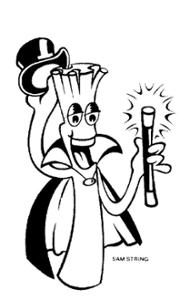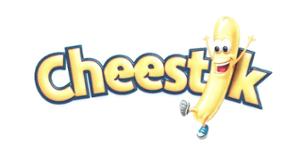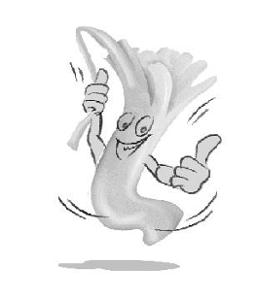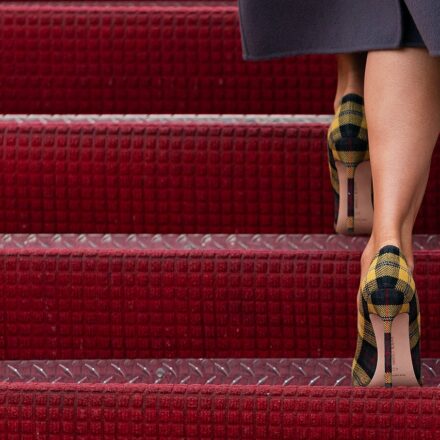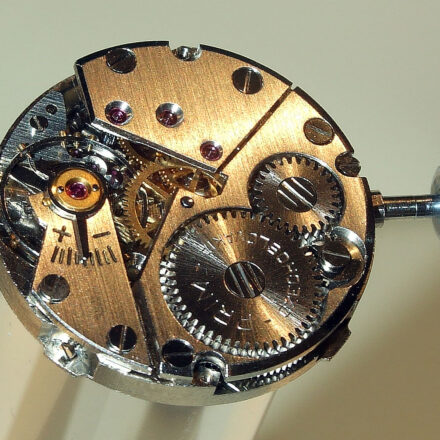From fifty shades of gruyere to cheddar ideas, we in the IP team love cheese in all shapes and forms including… string cheese? String cheese is created through a manufacturing process that aligns the proteins in the cheese, which makes it stringy. We hear string cheese can even be sold in a can.
String it on: Saputo Cheese USA Inc
Saputo is among the top mozzarella, string cheese, and domestic blue cheese producers in the USA. In Australia, Saputo Cheese produces, markets and distributes a variety of cheese, butters, milk and cream products for brands such as COON, Cracker Barrel and Devondale.
In the US, Saputo sells a line of products under the Frigo Cheese Heads brand.
It does not appear these products are sold or distributed in Australia. In fact as will become pivotal later, Saputo was not able to provide any evidence of use of the cute cheese stick cartoon marks in Australia.
As gouda as it gets: Bega Cheese Limited
Bega is an Australian food company with manufacturing sites in New South Wales, Queensland and Victoria. Its flagship ‘Bega’ brand holds over 15% of the Australian retail cheese market and its products are exported to 40 countries around the world.
You may be familiar with Bega Stringers. Bega Stringers are cheese sticks that can be peeled into strings making them ‘more fun to eat’. Some may even recall the late 90s to 00s television commercials featuring Sam String touting ‘mouthfuls of magic’.
Bega owns a number of registered trade marks in Australia for its Bega Stringers cartoon characters, including the below:
(the ‘Bega Character Marks’).
Saputo’s trade mark applications
On 1 March 2018, Saputo filed trade mark application nos. 1910618, 1910619 and 1910620 in class 29, details of which are set out below:
| App No. | Trade mark | Priority date | Goods and services |
| 1910618 |  |
1 March 2018 | Class 29: Cheese |
| 1910619 | 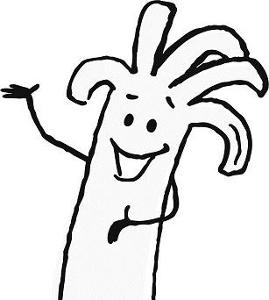 |
1 March 2018 | Class 29: Cheese |
| 1910620 | 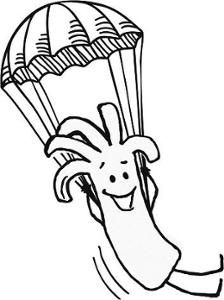 |
1 March 2018 | Class 29: Cheese |
(the Saputo Applications). You will notice the Saputo Applications feature a string cheese character with variations to its pose and the addition of a bicycle and parachute device.
Acceptance of the Saputo Applications for possible registration was published in the Australian Official Journal of Trade Marks on 19 July 2018. Bega opposed registration of the marks, leading to a hearing that was conducted and heard by Hearing Officer Bianca Irgang as a delegate of the Registrar of Trade Marks on 6 March 2020.
A curd in the hand is worth two in the bush: grounds of opposition
Bega nominated a number of grounds of opposition under the Trade Marks Act 1995 (Cth) which we will canvas below. The onus was upon Bega to establish one or more of its grounds of opposition for each of the Saputo Applications in order to successfully oppose their registration.
Section 44 – Substantial identity or deceptive similarity
In order to establish a ground of opposition under section 44, Bega had to show all of the following:
- the opposed trade mark is either substantially identical or deceptively similar to a trade mark, either registered or pending registration, in the name of a person other than Saputo;
- the trade mark in the name of the other person must be in respect of similar goods or closely related goods; and
- the priority date of the trade mark of the other person is earlier than the priority date of the Saputo Application.
Each of the Bega Character Marks had an earlier priority date than the Saputo Applications. Ms Irgang also considered that the goods applied for in the Saputo Applications were the same as those covered by the Bega Character Marks. It then turned to whether or not Saputo’s marks were substantially identical with or deceptively similar to an existing registered trade mark or pending registration owned by someone other than Saputo – namely, Bega.
Trade Mark Application No. 1910619 – substantially identical?
Bega submitted that Saputo’s App No. 1910619 was substantially identical to Reg No. 1121462 – they are extracted side-by-side below:
| Saputo’s mark | Bega’s mark |
 |
 |
Ms Irgang said it was ‘clear’ that Saputo’s mark was substantially identical with Bega’s mark. The dominant cognitive cues could only be based upon the graphic devices since there were no words present in the marks. The respective marks were both a ‘widely, open lipped smiling anthropomorphised cheese stick figure cut in half at the ‘waist’ and bending backwards to the right with the left hand raised in the air’ (try say that in one breath). Ms Irgang went on to comment that both cheese stick figures sported ‘chunky’ hair – and specifically referred to both having ‘a lock of hair curling forwards to the left over the face while not directly facing forward but at a 45 degree angle to the left’. Very specific.
She concluded she was satisfied that a total resemblance existed between the two ‘cheerful, animated cheese sticks with chunky hair and animated gestures’, and Saputo’s App No. 1910619 was prevented from being registered.
Trade Mark Application No. 1910618 and 1910620 – deceptive similarity?
Bega asserted that both App Nos. 1910618 and 1910620 (with the bicycle and parachute devices respectively) were deceptively similar to the Bega Character Marks.
Deceptive similarity is defined by section 10 of the Act. Unlike above when the marks were being considered for being substantially identical, the marks were not to be looked at side by side – the determination of deceptive similarity requires a comparison of the impression which persons of ordinary intelligence and memory would have upon recalling the opponent’s trade mark, to the impression that they would form from Saputo’s mark. Further, the likelihood of deception must be finite and non-trivial.
Bega’s submissions
Bega submitted that its cheese stick figures in the Bega Character Marks could be equated to a ‘family’ of marks. It asserted that the different poses and elements of the smiling cartoon cheese stick figures of the Bega Character Marks compared to those of the smiling cartoon cheese stick figures in Saputo’s App Nos. 1910618 and 1910620 did not diminish the possibility of confusion. Given the number of Bega Character Marks which incorporate an anthropomorphised smiling cartoon cheese stick figure, Bega suggested that consumers who know of the Bega Character Marks and upon seeing the products bearing the character in Saputo’s Applications would likely believe that the products came from the same trade source or were related to Bega’s string cheese products.
Bega also pointed out that the stick cheese figures were marketed to appeal to children, whose exposure to products may be predominantly visual without too much focus on any other trade marks which may also be present on the packaging. Indeed, Siobhan Ryan, Counsel for Bega, suggested that the ‘harried purchaser, aided by the pester power of children, may well grab the nearest packet of cheeses featuring a cheese stick character without reference to any differences between the images’ – and it was highly likely Saputo’s products would be sold in the same area as Bega’s – the refrigerated shelf unit in a supermarket.
Saputo’s submissions
In response, Saputo argued that many food traders routinely use cartoon characters in relation to their goods, so the characters are used decoratively and descriptively in the sense that in most cases they represent the actual product being sold. Numerous examples were raised, including Allens Snakes Alive using the picture of a cartoon snake and Coles yoghurts using a cartoon character of a strawberry on strawberry yoghurt. Where people were familiar with the practice of using cartoon characters representative of the goods, Saputo submitted that those images would have little, if any, trade mark significance and so its presence must be discounted to some extent in considering whether the trade marks were deceptively similar.
Therefore Ms Irgang had to determine whether a prospective purchaser, although aware that the respective trade marks were different, would still be caused to wonder whether they were the property of the same entity. To hold such a belief required that the respective trade marks be seen to have some sort of relationship – that Saputo’s two cartoon cheese stick figures bearing a bicycle or parachute would be seen as a member of Bega’s ‘family’ of cheese stick trade marks because of a commonality or mutual feature.
That’s what cheese said
Ms Irgang had already decided that a ‘bipedal, smiling cheese stick figure with chunky hair and animated gestures’ was the common element in all the trade mark representations. She opined that the additional graphic devices such as the bicycle and parachute to Saputo’s cheese stick figures did not detract from the common identity as a smiling cartoon cheese stick with chunky hair and animated gestures. Although the trade marks look different when viewed side by side, marks are often imperfectly remembered by prospective purchasers. Ms Irgang agreed with Bega that once the common element of the smiling cartoon cheese stick character was imperfectly recalled, it was likely to induce the public into believing that goods branded with the trade marks emanate from the same trade source.
No whey forward: subsections 44(3) or 44(4)
Subsection 44(3) provides the Registrar the power to accept the application for the registration of Saputo’s marks if the Registrar could be satisfied that:
- there had been honest concurrent use of the two trade marks (that is, a Bega Character Mark and a mark the subject of the Saputo Applications); or
- because of other circumstances, it would be proper to do so.
Pursuant to subsection 44(4), the Registrar could not reject Saputo’s applications if the Registrar was satisfied that Saputo had continuously used Saputo’s mark for a period:
- beginning before the priority date for the registration of a Bega Character Mark in respect of the similar goods or closely related goods; and
- ending on the priority date of a Saputo Application.
As we mentioned earlier, Saputo was unable to provide any evidence of use of the marks in Saputo’s Applications or any other circumstance helpful to its case, which prevented the Hearing Officer from applying either subsection.
Feta luck next time…
Ultimately, Ms Irgang refused to register any of the Saputo Applications.
Harried parents of children who possess pester power, can you do a litmus test to compare the two sets of characters?
Featured image: Kritzolina, CC BY-SA 4.0, Wikimedia Commons.








